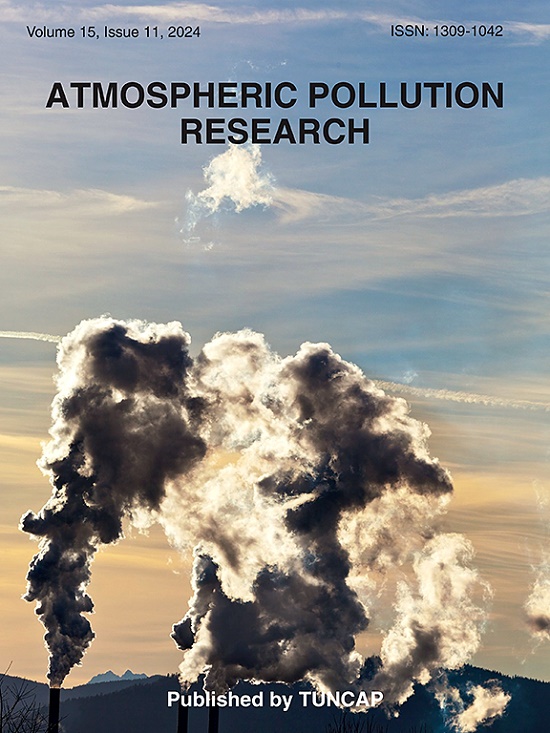工业区域气味时空分布及热点定位——以移动微传感车识别潜在排放源为例
IF 3.5
3区 环境科学与生态学
Q2 ENVIRONMENTAL SCIENCES
引用次数: 0
摘要
本研究利用微传感装置对台湾南部某工业园区的硫化物(H2S)、氨(NH3)和总挥发性有机化合物(TVOCs)的时空分布进行了研究。这些装置安装在流动车辆上,并与地理信息系统和全球定位系统相结合,以进行实时环境监测。利用监测数据绘制浓度等高线,使用SURFER绘图软件跟踪排放源。工业园区的西北部有一个堆肥设施,北部有两个牲畜养殖场,据估计,这些养殖场是工业园区东北部高浓度H2S (360-600 ppb)和NH3 (840-1500 ppb)的来源。此外,西北部的两家大型溶剂回收处理厂正在排放挥发性有机化合物(180-1200 ppb),这是有机污染物的恶臭来源。结果成功地证实了气味投诉的位置与气味检测热点高度相关。因此,配备微传感装置的移动智能车可以准确定位气味污染的位置,进一步协助环境检查机构进行污染防治。本文章由计算机程序翻译,如有差异,请以英文原文为准。
Spatiotemporal distribution and hotspot positioning of odors in an industrial area: A case study on identifying potential emission sources using a mobile micro-sensing vehicle
This study utilized a micro-sensing device to identify the spatiotemporal distribution of sulfide (H2S), ammonia (NH3), and total volatile organic compounds (TVOCs) in an industrial park located at southern Taiwan. These devices were installed on a mobile vehicle and integrated with geographic information systems (GIS) and global positioning systems (GPS) for real-time environmental monitoring. The monitoring data were used to plot concentration contours with a SURFER mapping software for tracking emission sources. There was a composting facility to the northwest and two livestock farms to the north of the industrial park, which were estimated to be the sources of the high concentrations of H2S (360–600 ppb) and NH3 (840–1500 ppb) in the northeastern region of the industrial area. Additionally, two large solvent recovery treatment factories in the northwest are emitting VOCs (180–1200 ppb), contributing to the odorous source of organic pollutants. The results successfully confirmed that the locations of odor complaints were highly correlated with the odor detection hotspots. Therefore, the mobile intelligent vehicle equipped with micro-sensing device can accurately position the locations of odor pollution and further assist environmental inspection agencies for pollution prevention.
求助全文
通过发布文献求助,成功后即可免费获取论文全文。
去求助
来源期刊

Atmospheric Pollution Research
ENVIRONMENTAL SCIENCES-
CiteScore
8.30
自引率
6.70%
发文量
256
审稿时长
36 days
期刊介绍:
Atmospheric Pollution Research (APR) is an international journal designed for the publication of articles on air pollution. Papers should present novel experimental results, theory and modeling of air pollution on local, regional, or global scales. Areas covered are research on inorganic, organic, and persistent organic air pollutants, air quality monitoring, air quality management, atmospheric dispersion and transport, air-surface (soil, water, and vegetation) exchange of pollutants, dry and wet deposition, indoor air quality, exposure assessment, health effects, satellite measurements, natural emissions, atmospheric chemistry, greenhouse gases, and effects on climate change.
 求助内容:
求助内容: 应助结果提醒方式:
应助结果提醒方式:


